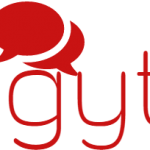Different practices of financial and management accounting result in the same costs being treated and presented in different ways leading to confusion. International Federation of Accountants (IFAC) is trying to develop a body of generally accepted cost accounting practices that provide clearer insights into cost behavior so that managers can control them better. Resource Consumption Accounting is one such focus.
Methods of Cost & Management Accounting
Job Cost Accounting: Costs are identified and accumulated to specific jobs (which might involve a single product, say a building, or a batch of multiple products). Such direct costs are only accumulated to the extent considered economically worthwhile. Other operating costs (overheads) are allocated to jobs in predetermined ways.
Process Costing: In process costing, costs are accumulated by production processes, and then allocated to the products passing through the process.
Standard Costing: Standards are developed for material consumption and labor hours per unit of product. Standards are also fixed for material prices and labor rates. Based on these, standard direct costs of products are estimated. Additionally, budgets are developed for overhead costs. Actual costs are then analyzed to identify consumption variances (excess or savings in material consumption or labor hours), rate variances and expense/overhead absorption variances.
Marginal Costing: Marginal costing seeks to identify the incremental costs for producing additional units of a product, and base short-term decisions such as whether to accept a specific order or what price to quote on these incremental cost estimates.
The above are seen as the traditional costing methods. More sophisticated methods seek to identify cost behavior more realistically and/or to control them more effectively.
Activity Based Costing: ABC seeks to identify all activities performed during production, map resource consumptions to these activities, identify the activities involved in producing specific outputs and assign the activity costs to the outputs accordingly. In addition to accumulating costs, ABC can also help in improving operations by identifying wasteful activities.
Life Cycle Costing: Estimates are made about the total likely costs of a product during its entire lifecycle, including research and development costs and final retirement costs. The feasibility of recovering this total cost through prices at different stages of the product lifecycle will then be examined. It is easier to make changes (that have a cost impact) at the design phase than after production starts. Lifecycle costing also seeks to identify the environmental impact of the product, such as energy consumption and waste generation.
Target Costing: Product design starts with a clear idea of the value perceptions and requirements of customers and sets a target cost to meet these. A multidisciplinary team will be involved in designing the product in a way that this target cost can be achieved using available materials, suppliers, processes and productivity levels.
Other approaches such as Kaizen and Lean accounting have also been adopted to obtain better control over costs while providing the value that customers want.
Resource Consumption Accounting
All activities in an organization consume economic resources such as people, space, equipment and consumables. Resource Consumption Accounting (RCA) seeks to measure these resource consumptions and allocate their cost to the consumers, which might be other resources, processes, products, services, customers, distribution channels or other cost centers.
In RCA, there is an overriding emphasis on cause and effect relationships so that managers have a cost model with which they can work more effectively. Instead of mere dollar values, the focus is on a quantitative model of how value is created. With this strong focus on what is happening, managers will have a clearer idea about cost behavior and the impact of different decisions.
Accounting and Management Solutions
Cost information is generated for two distinct purposes. One is to meet regulatory obligations such as those regarding disclosure of information to shareholders. Cost of Goods Sold and Inventory Valuation are the two main cost information provided thus. Another set of regulatory requirements relate to income tax liability computation. Transfer pricing is an example of cost information relevant to determining tax liability.
The second purpose of cost information is for internal management. In this case, it is the decision support significance of the information, rather than regulatory prescriptions, that determine how the information is accumulated and presented. Such decision support information can be an analysis of historical performance data that helps understand cost behavior, or it can involve what-if and other types of projections into the future to help select a course of action.
Management and cost accounting has thus a very different focus from traditional financial accounting intended for external stakeholders such as shareholders, lenders, customers, suppliers, government and the public. Cost control and management, and help with decision making, are the main focus areas of management accounting. Resource consumption accounting, with its focus on cause and effect and operational quantities, can provide invaluable help in these areas.





